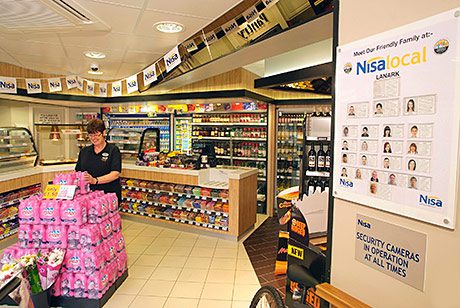
MUCH of the Scottish c-store scene looks set for a huge makeover in 2014 as operators north of the border get ready to invest in upgrades to their outlets.
More local shop owners are planning to invest in their businesses than at any time over the past two years, according to the Association of Convenience Stores’ latest quarterly Voice of Local Shops survey.
In the survey, of 1100 community retailers across the UK, respondents were more optimistic in November than they had been in the summer, and that confidence was reflected in retailers plans for investment in the coming year.
The study showed that UK-wide one in four retailers intended to make improvements to their stores in 2014. But in Scotland the proportion was even greater – more than one in three.
For ACS chief executive James Lowman the declarations of intent illustrate the retailers’ commitment to local areas.
“Despite tough competition and tight margins, local shops are backing their communities with hard cash and jobs,” he said.
“These figures demonstrate retailers’ optimism for the future, and give a promising indication that economic recovery is being felt by the everyday entrepreneurs running local shops in communities up and down the country.”
Are those involved in design and refits in Scotland’s convenience store industry witnessing increased interest? If operators, or at least a substantial number of them, are indeed looking to upgrade what are they looking to do and what is driving the trend?
Symbol store groups are recruiting keenly. Stores of different sizes and in a wide range of locations appear increasingly ready to embrace the symbol group system. An increasing number of operators see the need to modernise to maintain competitiveness and many, many store owners want to reduce energy costs.
Alex Dalglish, managing director of Arbroath-based shopfitting specialist Vertex reckons there has been more of a feelgood factor in convenience retailing recently. His firm was busy all last year, worked on jobs right up until Christmas and had a significant number of projects to take into 2014, he said.
The work has included large stores such as the very impressive independent Maclennan’s Supermarket in Benbecula (see page 50). But he reckons there’s also an increasing number of small stores, many of them in housing estates, who are ready to upgrade – often as part of a move into symbol group retailing.
The retailers are looking for increased turnover certainly, he said. But they also want to give something back to their local areas. And they are all keen to make energy cost savings. That makes refrigeration very important but there’s increasing awareness of energy-efficient lighting systems too, especially as some of the most efficient types and styles of lighting had begun to overcome some of the operating difficulties that had put some people off in the past.
“LEDs, until recently maybe weren’t quite there,” he said.
“Everyone accepted that they were cheaper to run but the capital cost was a bit prohibitive and the quality of the light left a bit to be desired, maybe it was a bit blue or stark.
“But the capital cost is coming down, the running cost is good and the quality of the light is getting better.”
Store owners who are carrying out full upgrades are, increasingly, choosing low-energy units with doors, he said.
There’s also some increase in demand for ‘solutions’ for food to go, tea and coffee, fresh cakes and muffins and, in some cases, hot food.
Availability of shelving units made in China is bearing down on costs of shelving, though some operators are still willing to specify systems that provide more shelf-depth options.
And many refit clients will specify hard-wearing high-quality tiles so long as they are good value for money, he said.
Craig Pringle of SAS Shopfitters reckons many store owners who are very keen to refit their shops because they realise that a well-designed and well-implemented re-design could allow the store to accommodate a wider product range, benefit from better customer flow and see reduced energy costs, he said.
And he’s another refit specialist who reckons shop owners want to offer more to the local community.
Store owners are also increasingly aware that the numbers add up, he argued.
“With say a £50,000 or £60,000 investment, if you work the shop well, market it well locally, expand the range and pull in some new customers, it will pay for itself fairly quickly.
“The sort of payment schemes we have in respect of leasing can make it very attractive to pay over four or five years and get VAT back. If you’re buying Enhanced Capital Allowance-compliant, energy-efficient equipment there are tax returns too.
“People have different budgets of course and we work with that but I think there is a trend to using high-quality equipment and materials. Clients want things to last.”













